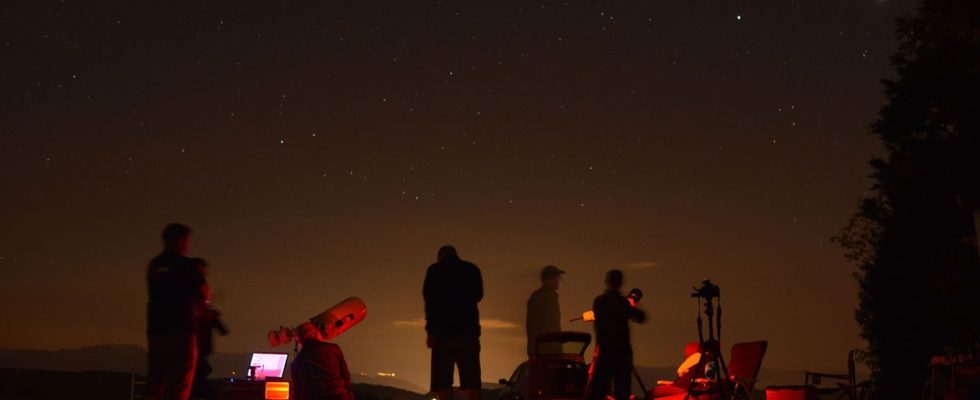Mark your calendars! While space enthusiasts will have something to eat this year, astronomy enthusiasts will not be left out either. In addition to the usual showers of shooting stars from the Perseids, the peak of which will be reached between August 10 and 12, and the Geminids, during December, the year 2024 promises to be rich in phenomena to observe. 20 minutes gives you a list of what not to miss.
April 8: total solar eclipse in North America
On April 8, the Moon will pass between the Earth and the Sun, casting its shadow on part of our planet. If the eclipse will not be visible from France, the lucky ones who will be in North America will be able to observe a “fantastic” spectacle, according to Olivier Las Vergnas, astronomer and president of the French Astronomy Association (Afa ): “If we are on the line of centrality (the zone where the eclipse is total), we will see the Moon completely covering the Sun, for a few seconds to a few minutes. At this moment, we see the Sun’s corona, that is to say the solar radiation around the Moon, then our satellite moves and the Sun emerges from the shadow. It’s an extraordinary sensation, you can feel night falling in broad daylight, the atmosphere changes.” Since solar radiation can cause irreversible damage to the eyes, it is essential to wear special glasses (sunglasses are of no use in this case) and not to look directly at the Sun without them.
If you want to experience this phenomenon without going to the other side of the world, you will have to wait until August 12, 2026. A solar eclipse will be “total from Iceland to Spain and the cone of shadow will pass around France” , where it will only be partial but will remain important given the high degree of darkness, explains Olivier Las Vergnas.
April 21: comet 12/P Pons-Brooks
Discovered for the first time in 1812, comet 12/P Pons-Brooks could delight young and old alike. But just might: the visibility of comets is impossible to predict, even a few months in advance. Around April 21 is when Pons-Brooks will shine the brightest, making her more likely to be seen without gear. It will still be “at the limit of the naked eye,” warns Olivier Las Vergnas. But you have to try! If it is visible, it will be in a perfectly black sky.” The astronomer gives his little advice to have a good evening and try to see the celestial object: “The ideal equipment for comets is the deck chair, the coffee maker and the pair of binoculars. They are not easy to see, you have to get used to the darkness, know where they are and have a wide field of observation.”
August 21: occultation of Saturn by the Moon
If occultations of Saturn are frequent, the one that we will be able to observe on August 21 in the early morning promises to be exceptional, provided you are equipped with a small telescope. “It’s really something great,” says the Afa president. We see Saturn’s ring eaten by the Moon. It looks like a ring with a pearl that you see disappearing on the edge of the Moon. It’s really not to be missed. » With the naked eye, you will be able to see Saturn approaching our satellite, but once very close to the light, the planet will be more difficult to see.
October 12: comet C/2023 A3 Tsuchinshan-Atlas
In October, and more particularly on the 12th, the date on which it will pass closest to the Earth, the most curious observers will perhaps be able to observe the comet C/2023 A3 Tsuchinshan-Atlas, discovered in February 2023. As for Pons- Brooks, it is impossible to know whether it will be very visible or what it will look like, but you can still look for it low on the southwest horizon. Being announced to be brighter than the first, “it’s worth trying to see it,” advises Olivier Las Vergnas. The method is the same as for the Pons-Brooks comet, so this will be an opportunity to bring out your awesome trio of deck chair, coffee maker and binoculars. “We can train with Pons-Brooks to try to observe that one,” the astronomer even suggests.
A year of Northern Lights?
The highlight of this year 2024 remains the probability of seeing the Northern Lights from France, as already happened last year. In 2024, the Sun, which operates on an eleven-year cycle, will be at its peak activity, paving the way for possible aurora borealis. “They are completely unpredictable, but there may be an alert and we could see them in France,” rejoices our astronomer. You have to monitor the sites that announce solar flares and watch the sky two or three days later. You have to look north and be really in the dark to be able to observe this phenomenon. »

